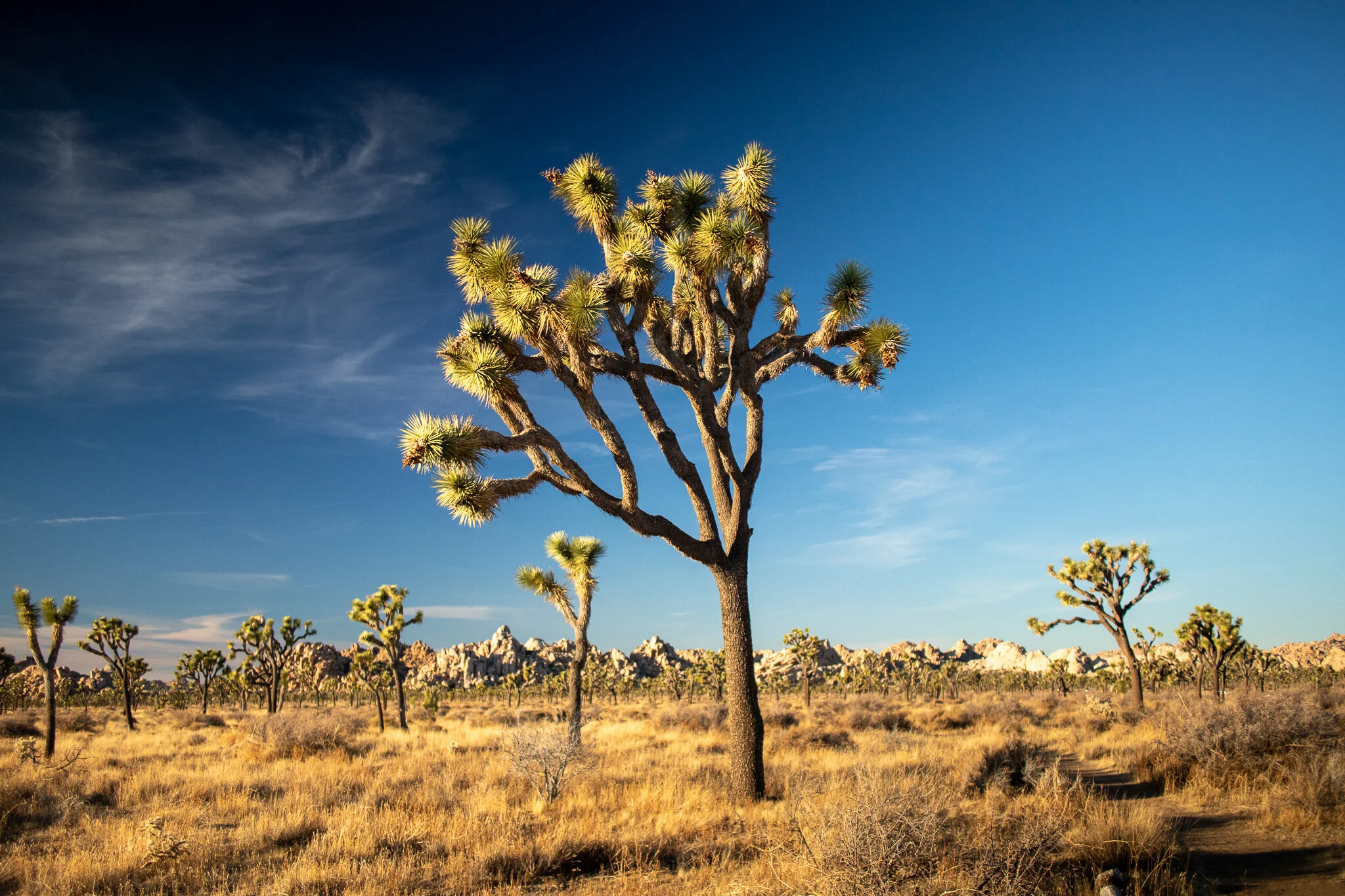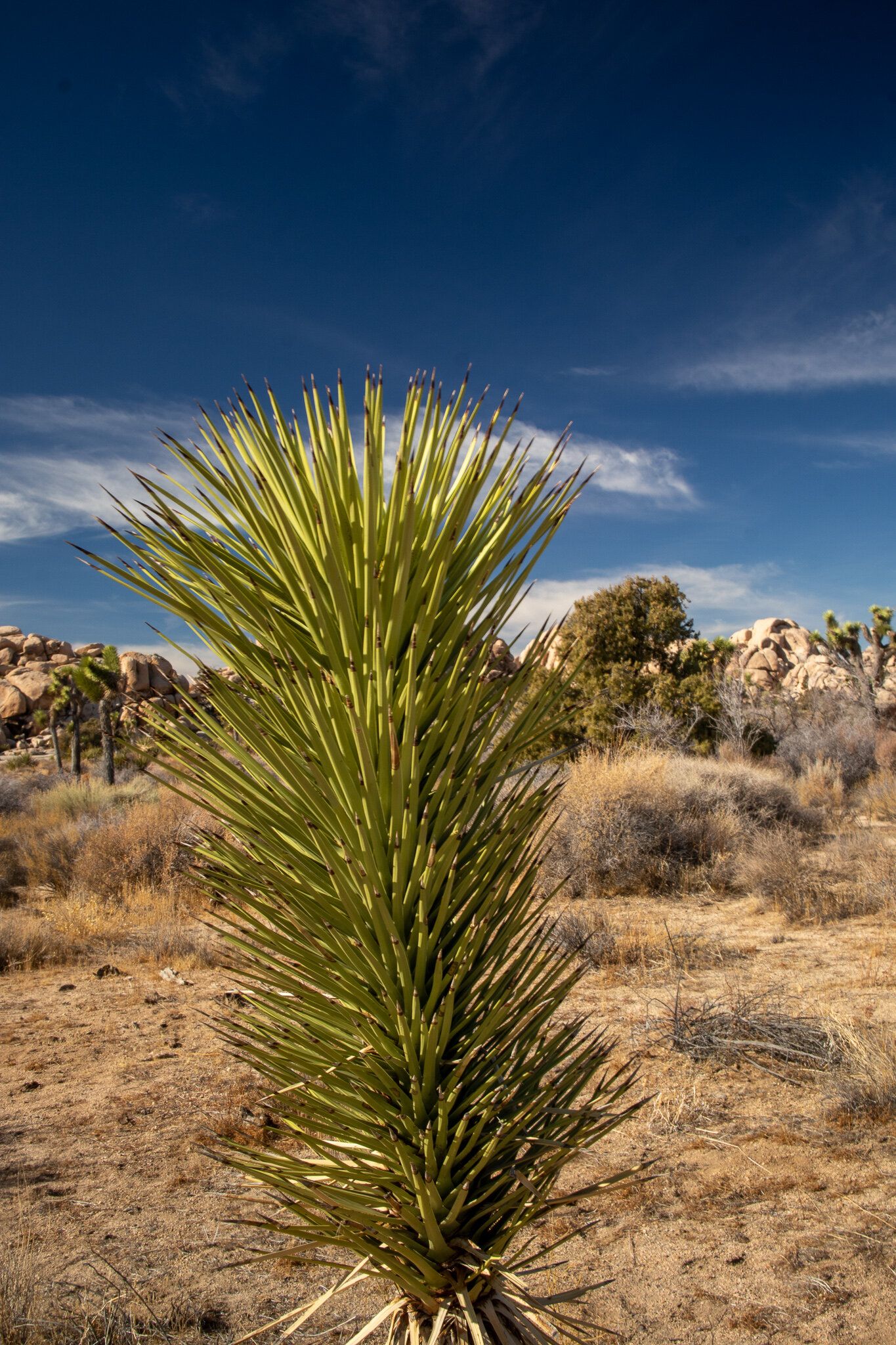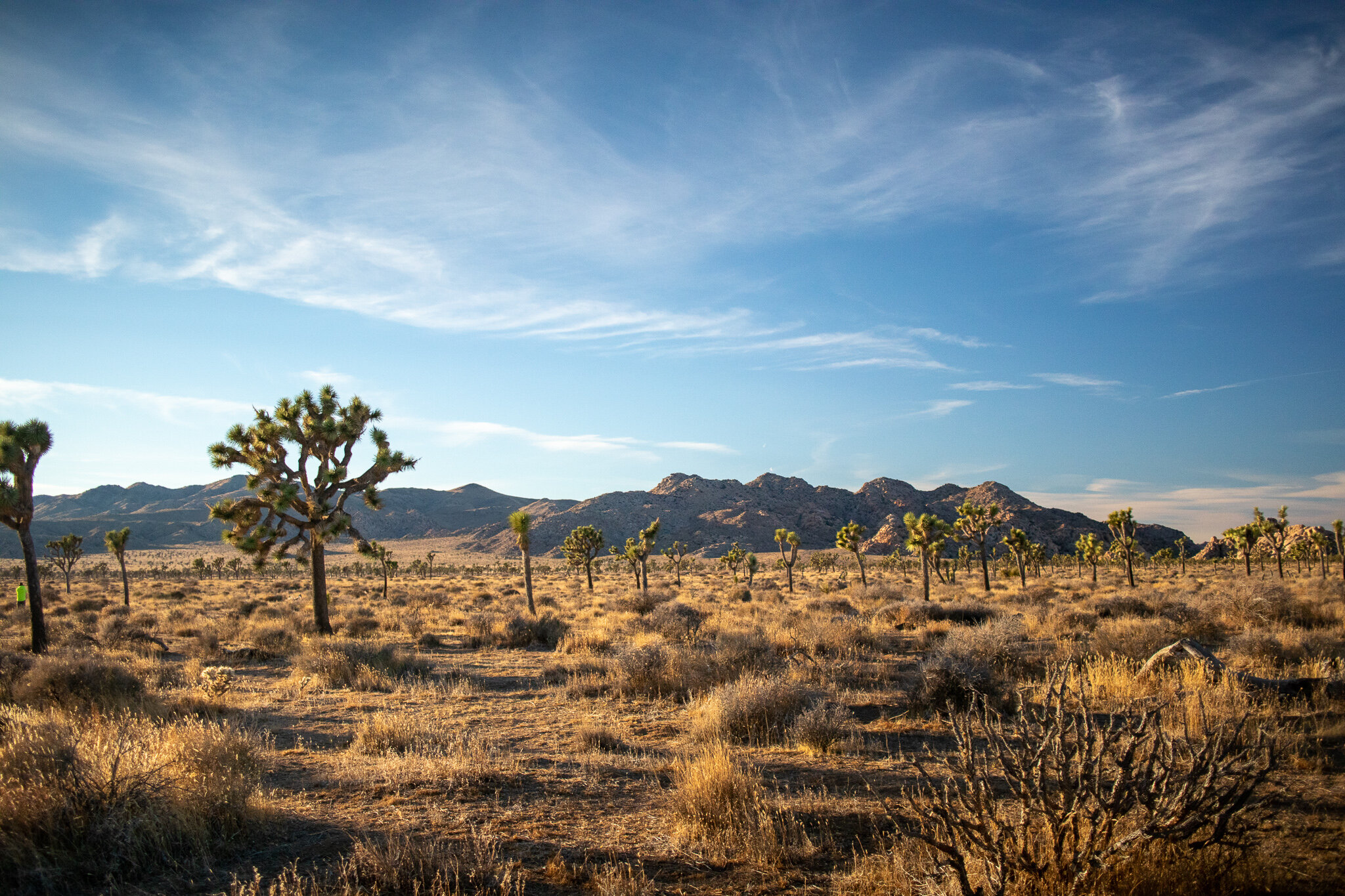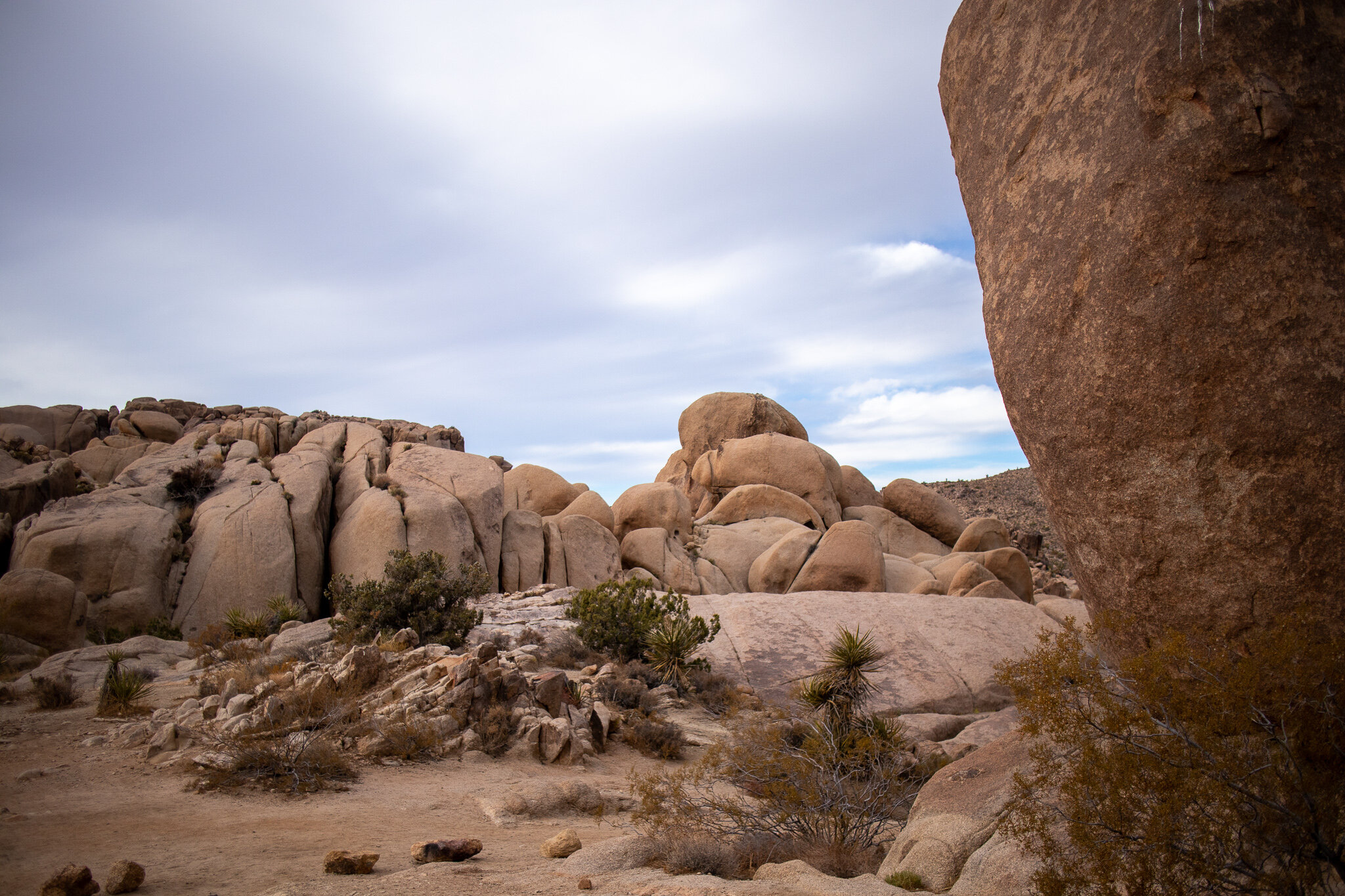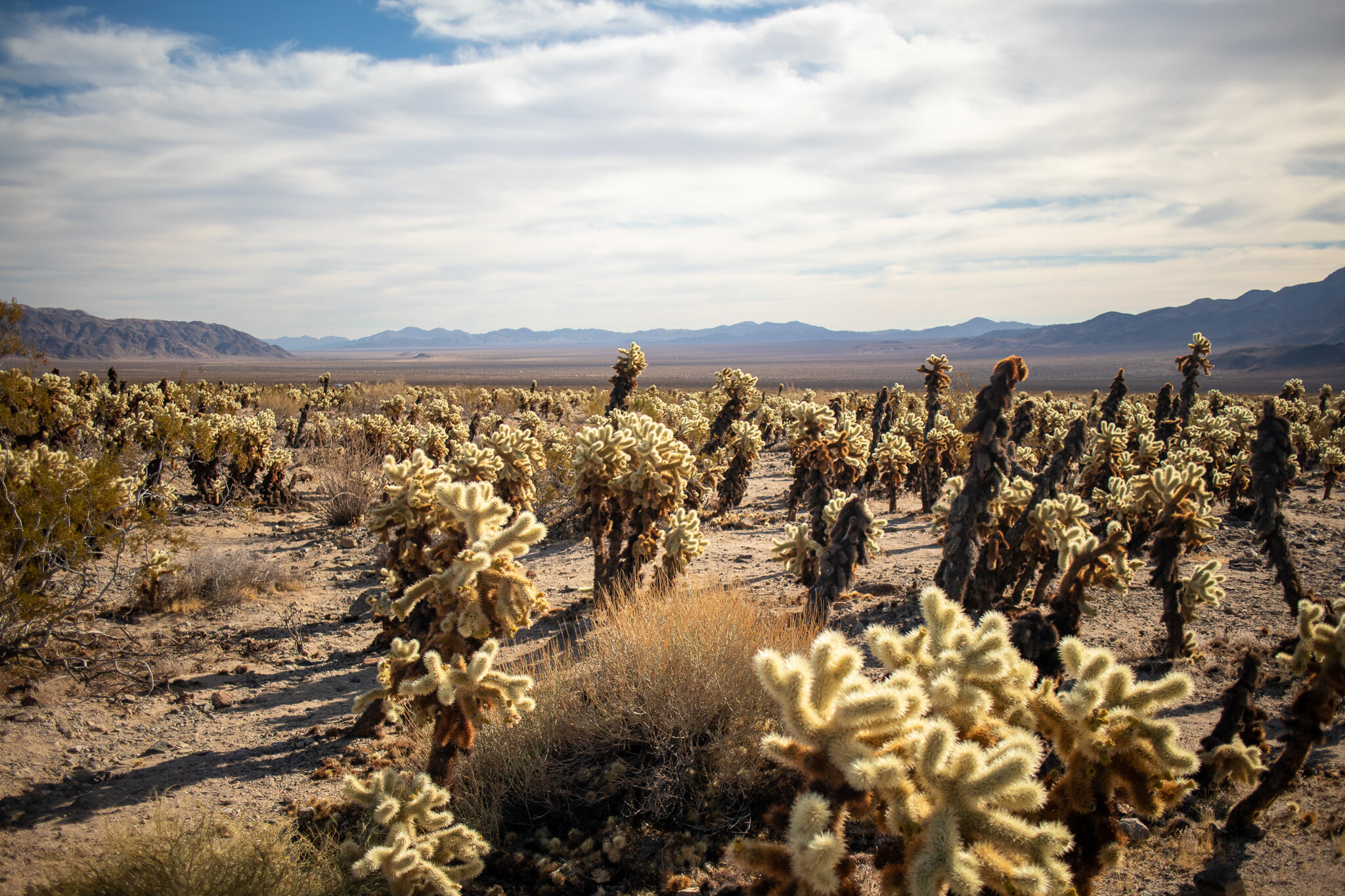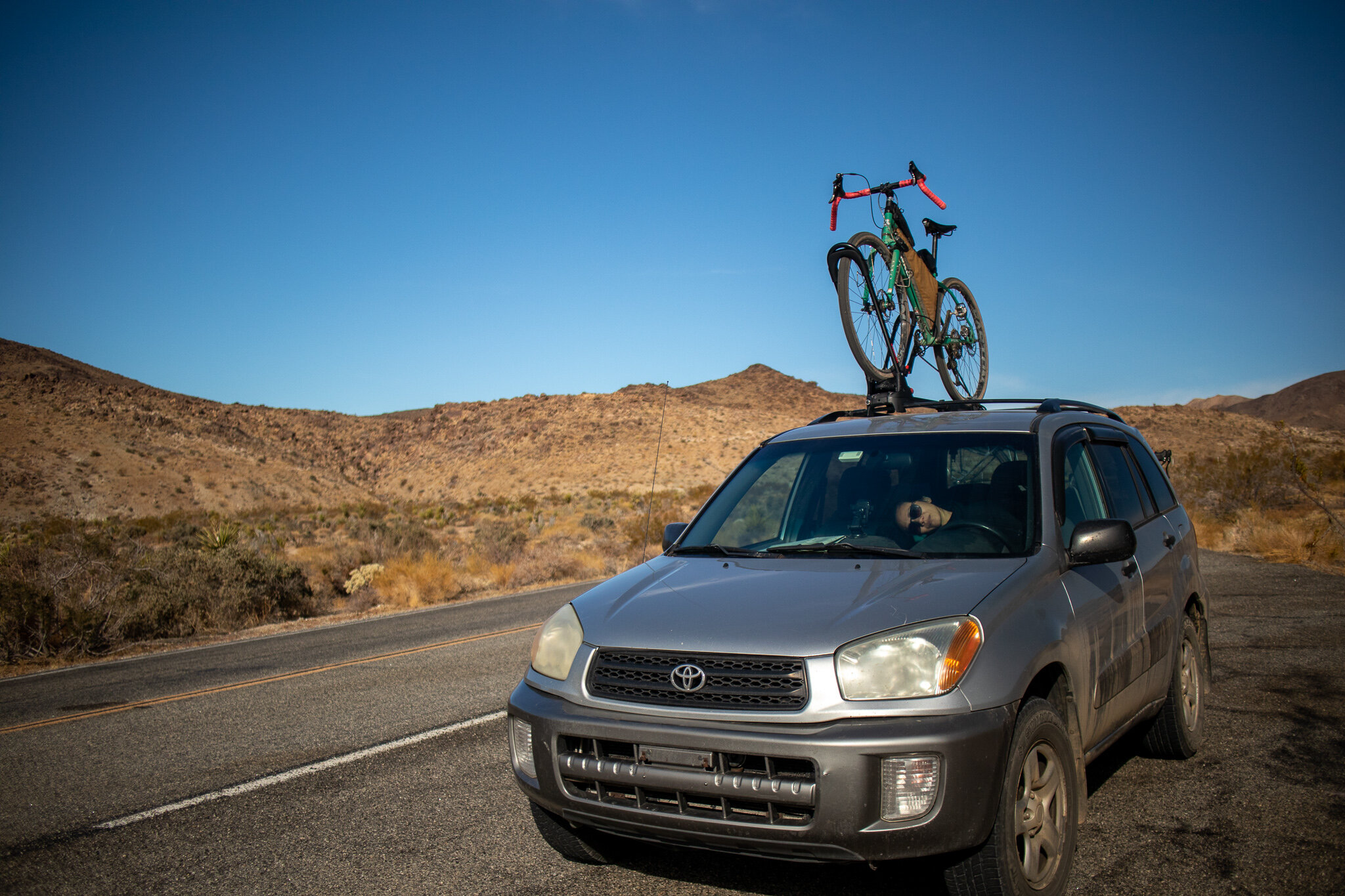Desert Collision: A Joshua Tree Photo Essay

I’ve always been drawn to the desert. I suppose a lot of people are called by the arid lands of the world. Maybe I’m not unique at all in my fascination with deserts. Still, my adventures in the outside continue to draw me back to them. Something is so mysterious and captivating about deserts. On the surface, they seem to be empty. The vivid, clear evidence of life that one may find in a forest, swamp, mountain range, or any other ecological area is starkly missing in a desert. There is an eerie quiet to the desert - a silence that may suggest an utter lack of life. That’s what I’ve always loved about them - how much lives beneath that silence.
Despite my love of the desert pushing me to go on long hikes and bicycle rides through many deserts in the US, I somehow had yet to make my way to perhaps the most famous display of desert life - Joshua Tree National Park. The vast designation of protected land where the Sonoran and Mojave Deserts come together in Southeastern California is in many ways the pinnacle of desert exploration. I finally managed to find my way to Joshua Tree. It found everything I love about deserts and many new, exciting things.
The desert is, in my opinion, the most photogenic of ecological sites. The extreme sun exposure casts fascinating lighting on every corner of the landscape throughout the day. The odd plants and animals amaze the eye (and camera). A photo essay seemed to be the best way to do my Joshua Tree trip justice. I offer it up to you now, in the spirit of the silence of the desert.
The Tree and the Park
Even among desert plants, the Joshua Tree is unique. It’s awkward, jagged, aggressive limbs stand out, unlike any other tree. It appears to be a demented cousin of the more aesthetic palm tree - a dark, almost evil looking alternative. Surprisingly sharp points are found at the end of each leaf that, when poked - prove to the unfortunate curious soul that these trees are not to be messed with, merely observed.
The park couldn’t be more full of Joshua Trees. I’ve hiked through Joshua Tree groves before on the PCT but never in so many numbers as here. A veritable army of Joshua Trees greets any visitor as they make their way over the mountain pass that forms the Northern border of the park and into the vast valley that makes up a majority of its landscape. They stand tall and information - and they couldn’t look more intimidating.
Behind the menacing view of a Joshua Tree, however, is a rather curious plant. As my friends and I wondered at one up close, we reveled in how these unique plants became so remarkable. Those sharp-pointed leaves come to such a finite end to increase the surface area of the leaf itself. The many dead and discarded leaves covering the majority of the tree are explained by the Joshua Tree leaf's incredible efficiency. They don't need many of these to intake enough sunlight to survive.
The flowers that bloom every Spring are pollinated by the Yucca Moth. Without this moth, the Joshua Tree could not exist. The moths spread seeds by laying them with their larvae, allowing the massive groves to develop at incredible rates. Still, they dwindle in numbers. 11,000 years ago 40 foot tall Joshua Trees spread all over North America - warmer and drier climates have confined them to these small sections of the Mojave desert.
The Joshua Tree defines this land - quite literally. As one explores the park, the once jarring and unsettling figures become familiar - a symbol of the strange, beautiful nature of this place.
Mojave
The Mojave Desert covers over 270,000 square kilometers across Nevada, California, and Arizona. It is elevated much higher than most deserts, ranging from 900m up to 3000m. This gives the entire desert incredibly unique and diverse flora and fauna. The Joshua Tree chief among them. Plenty of birds (ravens, wrens, woodpeckers, hawks, owls), rodents (jackrabbits, mice, rats, squirrels), reptiles (lizards, snakes, tortoises), and more call the Mojave Desert home.
If you're looking for Joshua Tree's, the Mojave is the place to be. Though they find their way into a few other deserts, this is primarily where they are located today. Still, the Josh is but one of a vast array of plants scattered across this desert. The park is a fantastic opportunity to see all of them. Many cacti, scrubs and shrubs, yucca, and more will be found on any hike or ride in the park.
The Mojave also has a volcanic history - 100 million years ago, magma was pushed out of the ground here to form Josh's other famous imagery - it's boulders. The geological display in this park is perhaps unmatched by any other National Park. Thousands of visitors come every year specifically for the challenge of climbing and bouldering on the park's many famous routes.
Sonoran
If a Joshua Tree National Park visitor were to only spend their visit on the much more popular Western half of the park, they would be missing what truly makes Josh special. One could see almost every famous sight the park has to offer without ever entering the entire other half of the park. Still, they would miss the most unique part of Joshua Tree: its other desert.
The Sonoran Desert spans 260,000 square kilometers across Southern California, Arizona, and Northwestern Mexico. It is much lower than its neighbor to the West - about 1000m lower on average. This gives it a hotter, more intense, classic desert climate. Still, the Sonoran Desert finds as much life as the Mojave.
If one were to visit the Mojave one year and the Sonoran the next, it might be difficult for them to pick out the differences. As I mentioned, the surface level of a desert is not what makes it unique. When in Josh, though, one has the opportunity to see where these two deserts collide. The differences in flora, fauna, scenery, and climate just a few miles down the road is impossible to believe.
Though the Joshua Tree is, of course, the star of this park, it has a Sonoran companion that, in my opinion, captivates the imagination just as much. The Teddy Bear Cholla has been my favorite plant since hiking the AZT in 2019, so perhaps there is a bias here, but it is as fascinating a plant as any.
These soft, fuzzy, friendly-looking cacti are, of course, anything but. Only catching one bur to the hand can make for a challenging, painful process of removing the barbed defense mechanism from your swollen flesh. Anyone unfortunate enough to experience this will be all the more amazed by the animals that make surprisingly efficient use of these demon plants. Cactus wrens can successfully protect their nests from predators by building them here. Desert woodrats use fallen barbs from the plant to fortify their own habitat.
Looking across a Teddy Bear Cholla garden is a sight to behold. A field of yellow sparkles and dances in the desert sun. Up close, the plants show tempting, succulent buds. Navigating through their endless display, feels intimidating. Truly, the Teddy Bear Cholla represents the miracle of life in the desert as well as any plant or animal.
Humans
As is the complicated, sad truth of any National Park, humans' evidence here is impossible to avoid. Although it is undoubtedly one of the most remote, wilderness filled parks, people have left their mark here. Old, decaying cars scatter the desert landscapes. Remnants of mining operations, machinery, and mills can be found on some of the hiking trails and dirt roads. Located only two hours from Los Angeles, visitation at this park beats most others. Long lines of traffic greeted us at the 29 Palms entrance and the notoriously busy West entrance.
What a relief to have brought the bikes. Only one road passes through Joshua Tree National Park, but it is an easy one to cycle. Riding through the desert on two-wheels, skipping the lines of traffic looking for parking spots at every trailhead and sight, we enjoyed a free day breathing in the fresh air.
One particular incident left me feeling the guilt of my own presence. We pulled off the road to grab a photo of the Pinto Basin - the vast entrance to the Sonoran Desert when heading Southeast. A roadrunner sat in the way of the vehicle. I waited for it to get out of the way before entirely pulling off the road. Still, as we got out, got our photos, and enjoyed the scenery, the bird didn't budge. It was clearly perturbed by our presence - perhaps guarding a nearby nest. We got back into the car, the bird not moving one inch from it's post only feet away. We drove on, wondering how drastically we had changed its day.
Josh at Night
This place is, in my opinion, best observed in the evening hours. Despite the freezing, winter, desert nights, I made it a point to stay in the park past sunset and see how quickly it can change. As the flaming, pink, and orange sky fades to a dark blue, the Joshua Trees take a different shape. Their silhouettes are often scary and menacing looking. As the famous dark sky stars come up behind them, the night sky's light shines in ways on them, the sunshine never could.
——————————————————————————————————————————————————————————————————————--
Many have referred to the desert as other-worldly; it evokes images of Martian landscapes and dunes from distant planets. The animals that make their home in the desert are often strange, curious, and shocking sights. The plants have evolved in specific, desperate ways to still find a way to survive in the harsh climate. A trip to Joshua Tree will remind one that although the desert can be so different, it is very much a part of our world. Just as it does almost everywhere on Earth, life finds a way here.
A glance out at the desert landscape from a mountaintop in Joshua Tree suggests nothing to be seen but rocks and dirt; a lonely, single road winds its way across. A closer, intimate look at that landscape will indeed reveal much more to the observer.
